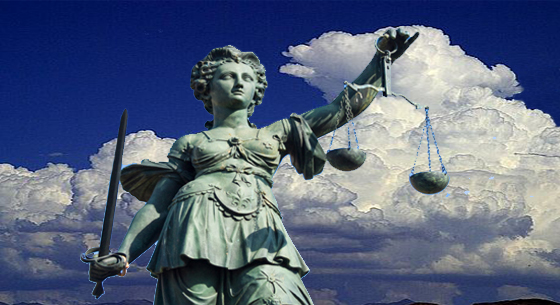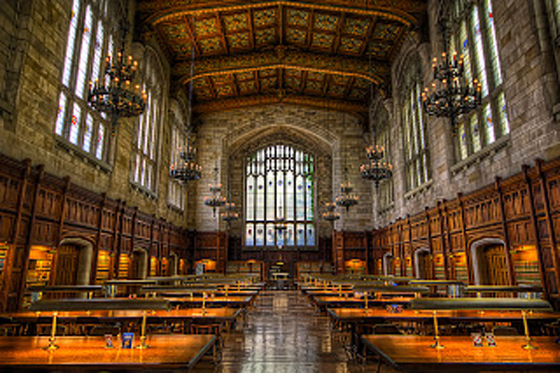Applicable Principles to Court of Appeal Hearings: 101
Court of Appeal, is a Court of Law that is empowered to hear an appeal of any decision from the lower Trial Court Division or any other lower tribunal on the premise Court of Appeal is a Court of Law that is intended to correct the errors made by lower Courts.Court of Appeal is usually restricted to examining whether the court and or judge made the correct legal determinations.. Furthermore, Court of Appeal is usually restricted to hearing appeals based on matters that were originally brought up before the trial court.
NATURAL JUSTICE
What are the rules of natural justice?
The principles of natural justice concern procedural fairness and ensure a fair decision is reached by an objective decision maker.
Maintaining procedural fairness protects the rights of individuals and enhances public confidence in the process.
A word used to refer to situations where audi alteram partem (the right to be heard) and nemo judex in parte sua (no person may judge their own case) apply.
The principles of natural justice were derived from the Romans who believed that some legal principles were "natural" or self-evident and did not require a statutory basis.
These two basic legal safeguards must reasonably, govern all decisions, by judges or government officials when they take quasi-judicial or judicial decisions.
Three common law rules are referred to in relation to natural justice or procedural fairness.
The Hearing Rule
This rule requires that a person must be allowed an adequate opportunity to present their case where certain interests and rights may be adversely affected by a decision-maker.
To ensure that these rights are respected, the deciding authority must give both the opportunity to prepare and present evidence and to respond to arguments presenting by the opposite side.
When conducting an inquiry, in relation to a complaint, it is important that the person being complained against is advised of the allegations in as much detail as possible and given the opportunity to reply to the allegations.
The Appellant relies, that Natural Justice and procedural fairness
requires administrators adhere to a fair decision-making procedure. The learned trial judge erred in law in not recognizing
the principal of law expressed in the Maxim Audi Alteram Partem (Latin;
literally 'hear the other side'). This Maxim, in law means: no person shall be
condemned, punished or have any property or legal right compromised by a court
of law without having heard that person.
In Moreau-Bérubév. New Brunswick (Judicial Council), 2002 SCC 11 (CanLII), [2002] 1 S.C.R. 249, the
Supreme Court of Canada confirmed at paragraph 35, that the right to be heard is part of an obligation to act fairly, however, the duty of an
administrative body to
adhere to that right is to be decided on a
case by case analysis:
The duty to comply with the rules of natural
justice and to follow
rules of procedural fairness extends to all administrative bodies acting under statutory authority (see Nicholson v. Haldimand-Norfolk Regional Board of Commissioners
of Police, 1978 CanLII 24 (SCC), [1979] 1 S.C.R. 311;
Cardinal v. Director of Kent Institution, 1985 CanLII 23 (SCC), [1985] 2 S.C.R. 643, at p. 653; Baker, supra,
at para. 20; Therrien, supra, at para. 81). Within those rules exists the duty to act fairly, which includes affording
to the parties the right to be heard, or the audi alteram partem rule.
The nature and extent of this duty, in turn, "is eminently
variable and its content is to be decided in
the specific context of each case" (as per L'Heureux-Dubé J. in Baker,
supra, at para. 21)
In Munn
v. Rust, 2006 NBCA 87 (CanLII) Justice M.E.L. LARLEE, J.A. stated the following
regarding a matter where the Judge was refusing to
consider a parties application to cross-examine
the deponents of the affidavits, and consequentially the motion
judge failed to exercise the Courts discretion
judicially at from paragraph 13 to through 16 as follows:
[14]
I am of the view that, in refusing to consider Mr. Munn’s application to cross-examine the deponents of the affidavits, the motion judge failed to
exercise her discretion judicially. Mr. Munn had a right
to be heard on that issue, and procedural fairness required
the motion judge to
hear him. It is only after hearing Mr. Munn’s arguments in support of his
request to cross-examine and any arguments made in
reply, that the motion judge would have been able to judicially exercise the discretionary powers
conferred by Rule 39.03.
[15]
In my view, the appeals should be allowed on the common ground raised in both Notices
of Appeal that allege that the motion judge erred
in the exercise of the discretion conferred by Rule 39.03. It follows that the
judge’s order striking out “those portions of the Plaintiff’s Statement of
Claim which assert a claim against the Defendant, Edward B. Rust Jr.”, must be set aside.
The Bias Rule
This second rule states that no one ought to be judge in his or her case. This is the requirement that the deciding authority must be unbiased when according the hearing or making the decision.
Additionally, investigators and decision-makers must act without bias in all procedures connected with the making of a decision.
A decision-maker must be impartial and must make a decision based on a balanced and considered assessment of the information and evidence before him or her without favouring one party over another.
Even where no actual bias exists, investigators and decision-makers should be careful to avoid the appearance of bias. Investigators should ensure that there is no conflict of interest which would make it inappropriate for them to conduct the investigation.
When The Learned Trial Judge failed to
understand the facts and arguments as presented by the Appellant and instead
pursued only the arguments and assertions as presented by the Respondent, this
predisposition of the Learned Trial Judge toward a particular result, is such
that a reasonable apprehension
of bias is raised. The Appellant contends that a reasonable
apprehension of bias arose by the fact that the
learned Trial Judge only accepted argument and evidence which favored the
Defendant’s position, further the learned Trial
Judge made obviously erroneous statements within the decision which reasonably
must be based on incorrect information, contrary to the facts of the case.
133.
In R. v. S.
(R.D.), [1997] 3 S.C.R. 484, the header of the Court’s decision sums up the
case before the supreme Court and provide relevant insight into the reasonable
apprehension of bias displayed by the actions and assertions of the Learned
Trial Judge, the relevant section of R. v. S. (R.D.), [1997] 3 S.C.R.
484 is provided in the following:
(2) Reasonable Apprehension of Bias
Per Lamer C.J. and La Forest,
Sopinka, Gonthier, Cory, Iacobucci and Major JJ.: The courts should be held to
the highest standards of impartiality. Fairness and impartiality must be both
subjectively present and objectively demonstrated to the informed and
reasonable observer. The trial will be rendered unfair if the words or actions
of the presiding judge give rise to a reasonable apprehension of bias to the
informed and reasonable observer. Judges must be particularly sensitive to the
need not only to be fair but also to appear to all reasonable observers to be
fair to all Canadians of every race, religion, nationality and ethnic origin.
If actual or apprehended bias
arises from a judge’s words or conduct, then the judge has exceeded his or her
jurisdiction. This excess of jurisdiction can be remedied by an application to
the presiding judge for disqualification if the proceedings are still underway,
or by appellate review of the judge’s decision. A reasonable apprehension of
bias, if it arises, colours the entire trial proceedings and cannot be cured by
the correctness of the subsequent decision. The mere fact that the judge
appears to make proper findings of credibility on certain issues or comes to
the correct result cannot alleviate the effects of a reasonable apprehension of
bias arising from the judge’s other words or conduct. However, if the judge’s
words or conduct, viewed in context, do not give rise to a reasonable
apprehension of bias, the findings of the judge will not be tainted, no matter
how troubling the impugned words or actions may be.
The apprehension of bias must be a
reasonable one held by reasonable and right-minded persons, applying themselves
to the question and obtaining thereon the required information. The test is what would an informed person,
viewing the matter realistically and practically -- and having thought the
matter through -- conclude. This test contains a two-fold objective
element: the person considering the alleged bias must be reasonable and the
apprehension of bias itself must also be reasonable in the circumstances of the
case. Further the reasonable person must be an informed person, with knowledge
of all the relevant circumstances, including the traditions of integrity and
impartiality that form a part of the background and apprised also of the fact
that impartiality is one of the duties the judges swear to uphold. The
reasonable person should also be taken to be aware of the social reality that
forms the background to a particular case, such as societal awareness and acknowledgement
of the prevalence of racism or gender bias in a particular community. The
jurisprudence indicates that a real likelihood or probability of bias must be
demonstrated and that a mere suspicion is not enough. The existence of a
reasonable apprehension of bias depends entirely on the facts. The threshold
for such a finding is high and the onus of demonstrating bias lies with the
person who is alleging its existence. The test applies equally to all judges,
regardless of their background, gender, race, ethnic origin, or any other
characteristic.
What the Judge actually intended
by the impugned statements is irrelevant conjecture. Given the concern for both
the fairness and the appearance of fairness of the trial, the absence of evidence
to support the judgment is an irreparable defect.
The Evidence Rule
The third rule is that an administrative decision must be based upon logical proof or evidence material.
Investigators and decision makers should not base their decisions on mere speculation or suspicion.
Rather, an investigator or decision maker should be able to clearly point to the evidence on which the inference or determination is based.
Evidence (arguments, allegations, documents, photos, etc..) presented by one party must be disclosed to the other party, who may then subject it to scrutiny.
The third rule is that an administrative decision must be based upon logical proof or evidence material.
Investigators and decision makers should not base their decisions on mere speculation or suspicion.
Rather, an investigator or decision maker should be able to clearly point to the evidence on which the inference or determination is based.
Evidence (arguments, allegations, documents, photos, etc..) presented by one party must be disclosed to the other party, who may then subject it to scrutiny.
Material misapprehension
of the evidence
168.
The factual findings
made by the Learned Trial Judge should not be accepted, because the Appellant
can show that they are unreasonable, based on a material misapprehension
of the evidence, and or tainted by a failure to consider material, relevant
evidence. The effect is significantly unjustified prejudice and or injustice to
the Appellant.
Discretion
250.
Black's Law Dictionary
(8th ed. 2004) defines Abuse of Discretion as follows:
abuse
of discretion.
1. An
adjudicator's failure to exercise sound, reasonable, and legal decision-making.
2. An appellate court's standard for reviewing
a decision that is asserted to be grossly unsound, unreasonable, illegal, or
unsupported by the evidence.
251.
The learned Trial Judge erred in law,
in irregularly applying the Courts Discretion. The Appellant contends, The
Learned Trial judge did display Abuse of Discretion. The Learned Trial Judge
instead rendered a decision which is unsupported by the evidence and clearly on
a erroneous finding of a material fact.
Capricious
In Matondo, Justice
Harington of the federal Court of Canada wrote:
"To be capricious is to be so irregular as to appear to be
ungoverned by law."
252.
The Appellant contends
the Learned Trial Judge’s decision lacked the degree of “justification,
transparency and intelligibility” required by the unreasonableness standard of
review and considered a unreasonable decision.
Reference: In Canada Revenue Agency v. Telfer,
2009 FCA 23 (CanLII), Justice EVANS J.A, reviewed the unreasonableness standard
of review, from Paragraph 29 through to 42.
Reference: In Baker v. Canada (Minister of
Citizenship and Immigration), [1999] 2 SCR 817 Justice Iacobucci J., stated
regarding exercise of discretion being unreasonable from Paragraph 57 through
to and including paragraph 68:
“An
unreasonable decision is one that, in the main, is not supported by any reasons
that can stand up to a somewhat probing examination. Accordingly, a court
reviewing a conclusion on the reasonableness standard must look to see whether
any reasons support it. The defect, if there is one, could presumably be
in the evidentiary foundation itself or in the logical process by which
conclusions are sought to be drawn from it.”
Reversible error
Questions of law
In Housen v. Nikolaisen, 2002 SCC 33 (CanLII), [2002] 2 SCR
235, this Court did provide a succinct view on the Courts standard of review. An
appeal is not a re‑trial of a case, consideration must be given to the standard
of review applicable to questions that arise on appeal. The
standard of review on pure questions of law is one of correctness, Appellate
courts require a broad scope of review with respect to matters of law, because
their primary role is to delineate and refine legal rules and ensure their
universal application. Action taken under
statutory authority is valid only if it is within the scope of that authority, if
it was not, the Court did commit
reversible error.
Findings of Fact
The standard of review for findings of fact is such that
they cannot be reversed unless the trial judge has made a “palpable and
overriding error”. A palpable error is one that is plainly seen.
The standard of review for inferences of fact is not to verify that the
inference can reasonably be supported by the findings of fact of the trial
judge, but whether the trial judge made a palpable and overriding error in
coming to a factual conclusion based on accepted facts, a stricter
standard. Making a factual conclusion of any kind is inextricably linked
with assigning weight to evidence, and thus attracts a deferential standard of
review. If there is no palpable and overriding error with respect to the
underlying facts that the trial judge relies on to draw the inference, then it
is only where the inference‑drawing process itself is palpably in error that an
appellate court can interfere with the factual conclusion.






















No comments:
Post a Comment